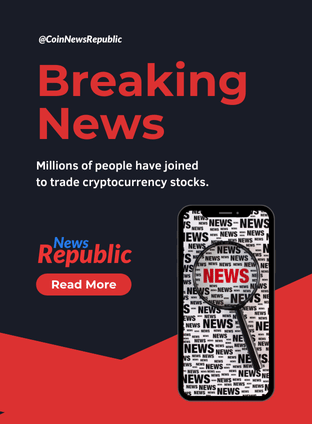While Bitcoin and Ethereum continue to dominate market capitalization and media headlines, it’s the altcoin ecosystem that is quietly driving the most meaningful innovation in crypto during 2025. From artificial intelligence integrations to decentralized finance (DeFi) evolution and real-world asset (RWA) tokenization, altcoins are reshaping the future of blockchain technology and utility at an unprecedented pace.
This emerging trend marks a departure from previous cycles where altcoins primarily followed Bitcoin’s lead. In 2025, functionality, adoption, and cross-sector use cases are defining success—and the projects at the heart of it are no longer just “ETH killers” or meme coins, but builders of infrastructure for the decentralized internet.
AI x Blockchain: The Smart Money is Moving In
One of the most transformative trends this year is the integration of AI into blockchain networks, led almost entirely by altcoin protocols. Platforms like Fetch.ai (FET), SingularityNET (AGIX), and Numerai (NMR) are building decentralized data marketplaces and AI agents that can interact autonomously within Web3 environments.
These AI-driven altcoins are enabling use cases such as:
- On-chain machine learning models for predictive trading
- Decentralized autonomous agents for logistics and supply chains
- AI-generated NFT content and metadata indexing
- Self-correcting oracles for DeFi platforms
The value proposition is simple yet powerful: AI needs clean, verifiable, permissionless data—and blockchain provides the trust layer AI lacks. As a result, altcoins leading this fusion are attracting both developer and venture capital interest. Several AI-focused altcoins have posted 200%–400% gains since January, and their networks are seeing record developer commits.
DeFi 3.0: From Liquidity Pools to Automated Credit Markets
DeFi is no longer limited to simple token swaps and staking rewards. The new wave of DeFi altcoins is focused on composability, capital efficiency, and risk-adjusted returns. Projects like Maple Finance, Aave V4, Morpho, and Synthetix 2.0 are introducing credit delegation, real-world lending, and modular trading layers.
New altcoins such as Pendle (PENDLE) and Gearbox (GEAR) are pioneering time-based yield markets and leveraged strategies, enabling protocols to act more like traditional hedge funds but on transparent, decentralized rails.
DeFi now competes with TradFi not just on ideology—but on features. Innovations like:
- Fixed-rate borrowing for institutions
- Smart LP vaults that auto-hedge exposure
- Options-based insurance layers for liquidity providers
…are turning altcoins into fintech solutions, not just speculative bets.
Moreover, DeFi altcoins are gaining regulatory attention. Several protocols are working with on-chain KYC partners to offer compliant yield products in Europe under the Markets in Crypto-Assets (MiCA) framework, making them more attractive to institutional capital than ever before.
Real-World Assets (RWAs): The Bridge to Trillions
Perhaps the most underappreciated driver of altcoin strength in 2025 is RWA tokenisation—the ability to bring tangible assets like real estate, private credit, carbon credits, and treasury bills onto blockchain networks.
Altcoins such as Centrifuge (CFG), Ondo (ONDO), and Goldfinch (GFI) are leading this charge, partnering with asset managers and banks to tokenize portfolios and open them to global liquidity. These platforms are not just experimenting—they’re processing hundreds of millions of dollars in real-world flows with fully licensed counterparties.
The benefits of RWAs are clear:
- Transparency through real-time auditability
- Fractional ownership of otherwise illiquid instruments
- 24/7 markets for global participants
- Programmable yield mechanisms that can be embedded into DeFi
The growth is exponential. According to data from Tokeny and Galaxy Digital, over $8 billion in RWAs were tokenized in Q2 2025 alone, with projections crossing $35 billion by year-end.
Interoperability and Modular Altcoins: The Glue of Web3
With new verticals emerging, cross-chain operability has become essential—and altcoins are at the center of this evolution. Projects like LayerZero (ZRO), Axelar (AXL), and Wormhole (W) are making asset movement across ecosystems seamless, creating what some are calling the “Internet of Blockchains”.
At the same time, modular altcoins like Celestia (TIA) and EigenLayer are redefining how consensus and execution are separated. This allows developers to build lightweight, purpose-built chains while still leveraging shared security from larger networks.
These infrastructural altcoins may not have the hype of meme coins, but they are powering the foundational services on which other protocols depend. From rollup as a service (RaaS) platforms to data availability layers, the infrastructure altcoin stack is increasingly critical.
Market Impacts and Capital Rotation
Institutional investors are beginning to recognize that the innovation layer of crypto is unfolding outside of Bitcoin and Ethereum. Hedge funds and venture capital firms are rotating portions of their portfolios into altcoin narratives that demonstrate product-market fit, scalability, and regulatory traction.
According to CoinShares, altcoins accounted for 42% of crypto VC allocations in Q2 2025, up from just 19% a year ago. Smart money are no longer just buying early tokens—they’re participating in governance, staking infrastructure, and ecosystem grant programs.
Retail traders are also following suit. With Bitcoin dominance stabilizing and Ethereum consolidating, altcoins with real utility are reclaiming market share. This is creating a cyclical effect: increased attention fuels liquidity, which attracts developers and users, which further reinforces network value.
Final Thoughts: Altcoins Aren’t Just Alternatives—They’re the Future
The 2025 cycle is shaping up to be less about blue-chip dominance and more about diversified innovation across altcoin sectors. Whether it’s the rise of AI-driven autonomous protocols, DeFi 3.0 financial primitives, or the tokenization of trillions in real-world value, altcoins are no longer just side projects—they’re leading the way.
For investors and builders alike, ignoring this segment of the market could mean missing the very developments that are set to redefine what crypto is—and what it’s capable of becoming.


